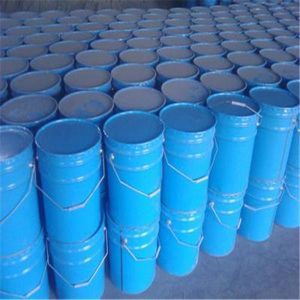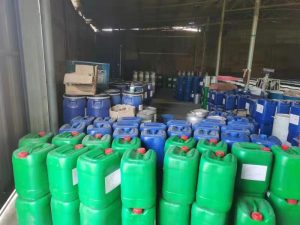Properties and Characteristics of Two Types of Cationic Surfactants
The charge in cationic surfactants is opposite to that of anionic surfactants, so we often call cationic surfactants ‘inverse soaps’. In terms of their chemical structure, they have at least one long-chain hydrophobic group and one positively charged hydrophilic group. The long-chain hydrophobic group is usually a fatty acid or petrochemical derivative, making fatty amines an important raw material for cationic surfactants. Cationic surfactants are distinguished by their antimicrobial properties and their affinity for adsorption on hard surfaces. In cosmetics, they are generally used as hair conditioners, bactericides, bacteriostats, softeners and anti-caries additives.

Fatty amine salts
Fatty amines are essentially organic bases that are uncharged in neutral solutions, this time without cationic surface activity, and are lipophilic at pH>7. Tertiary amine salts obtained by neutralisation of inorganic, or organic acids are sufficiently soluble to be fully recognised as effective cationic surfactants, organic salts are generally more soluble in water than inorganic salts. They are rarely used in detergent and cleaning agent formulations.
The cations of the non-quaternary amine salts are sensitive to pH, multivalent ions and electrolytes.
Ethoxylation of fatty amines produces ethoxylated amines, a surfactant that can be formulated with cationic surfactants by adjusting the pH and has better detergency.

When the fatty amine is neutralised by salicylic acid, or α-chlorobenzoic acid, the antifungal function can be improved.
Quaternary ammonium compounds in fatty amines are the most widely used class of cationic surfactants.
Quaternary ammonium salts are stable in acidic or alkaline media (<100°C). The solubility of quaternary ammonium salts is related to the chain length of alkyl chain, the longer the chain length, the lower the solubility in water, C16~C18 monoalkyl trimethyl quaternary ammonium salts are difficult to dissolve in water, soluble in polar solvents, insoluble in non-polar solvents. The dialkyl dimethyl quaternary ammonium salt is soluble in non-polar solvents and insoluble in water.
The special effect of quaternary ammonium salts lies in their adsorption on negatively charged surfaces and their bactericidal and sterilising effect. It is extremely important to note that compounding anionic surfactants, oxides, peroxides, silicates, silver nitrate, sodium citrate, sodium tartrate, borax, kaolin, proteins and some macromolecules are most likely to result in a reduction of their bactericidal power or turbidity.
The solubility of alkyl quaternary amine salts is related to the hydrophilic group, the more hydrophilic group groups, the better the water solubility. Mass fraction 5% isopropanol or mass fraction 10% aqueous solution, pH 6~9. Good chemical stability, light resistance, heat resistance, strong acid resistance, strong alkali resistance, with penetration, antistatic, bactericidal (C12~C16 the best effect) and excellent corrosion inhibition; Alkyl dimethyl quaternary amine salts have two long-chain alkyl groups as hydrophobic groups, with good softness, antistatic and some bactericidal ability, but also has a good It has good wetting and emulsifying effect, less irritation than alkyl trimethyl quaternary ammonium salt, cationic property under weak acid, and forms non-ionic compound under neutral and alkaline condition.

Alkyl Imidazoline Salts
Alkyl imidazolines are products generated by the reaction between fatty acids and substituted ethylenediamines, and the amide ethylamine generated by heating (generally 220~240°C) is converted into alkyl imidazolines.
Alkyl imidazoline is an organic one-membered ring tertiary amine with a medium-strong base. It is a typical cationic surfactant that adsorbs very strongly to negatively charged surfaces such as hair, skin, teeth, glass, paper, fibres, metals and silicon-containing materials. The salts produced by water-soluble acids tend to form gels at high concentrations. Acetic acid, nicotinic acid, phosphoric acid and sulphates are water soluble, but their long chain fatty acid salts are oil soluble. It has good storage stability when protected from moisture, but crystals may precipitate when left for long periods of time or stored at low temperatures, and can be restored to a homogeneous state when warmed and stirred. When exposed to water or moisture, it will gradually cause hydrolysis and change its function. Prolonged heating, even at temperatures as high as 165°C, will not affect its stability, only the colour will change. It is worth noting that alkylimidazolines are strong bases and can be irritating to the skin and eyes, but alkylimidazoline salts are much less irritating.

